
Lubrication has been pushed to the extreme limits of loads, speeds and torque transfer in several industrial segments such as mega wind turbines (> 10 MW) and electric vehicles. Increasing power transmission efficiency with lower surface distress requires a combination of advanced lubricants and surface engineering (coatings, texturing). Rolling-sliding contacts found in gears, bearings and manufacturing rolling operations are often evaluated using either ball-on-disc or twin-disc (roller on roller, RoR) configurations where both surface are independently driven to give different slide to roll ratios.
Ducom Twin Disc with roller on roller geometry (see Figure 1) offers a wide range of contact stresses, temperatures and slide to roll ratios relevant for tribology of highly loaded contacts (see Table 2).
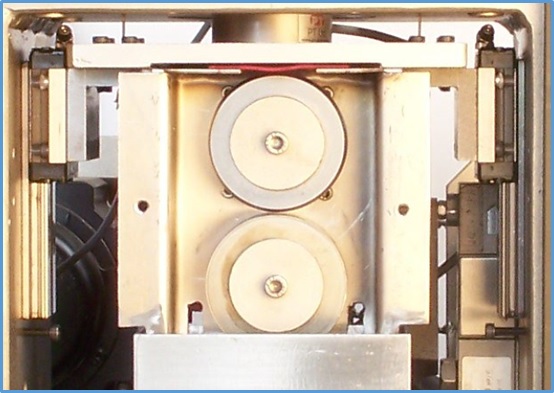
Figure 1. Ducom Twin Disc Machine or Roller on Roller
Table 2. Technical specifications of Ducom Twin Disc
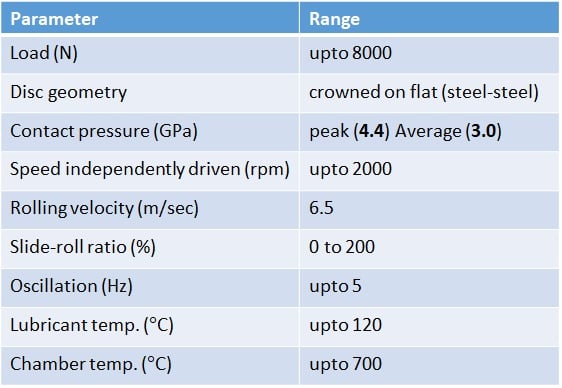
TWIN DISC compared with TRACTION MACHINE
It is important to compare the widely accepted rolling-sliding configurations i.e., twin-disc and traction machine. Roller on roller offers > 3 GPa contact pressures and realistic elliptical contacts using steel-steel pairs as compared to traction machine which can achieve it only by using either tungsten carbide materials or edge loaded barrel geometries. It is accepted as a reliable precursor for FZG scuffing tests. Moreover, rollers offer ease of manufacturing when it comes to evaluating coatings and textures. In addition, Ducom Twin Disc offers multiple contact geometries such as block on ring and conformal contacts compared with traction machine.
Lubricants and surface engineering solutions for extreme tribology will be better fulfilled using Ducom Twin Disc.
Table 3. Comparison of Ducom Twin disc (RoR) with Traction Machine
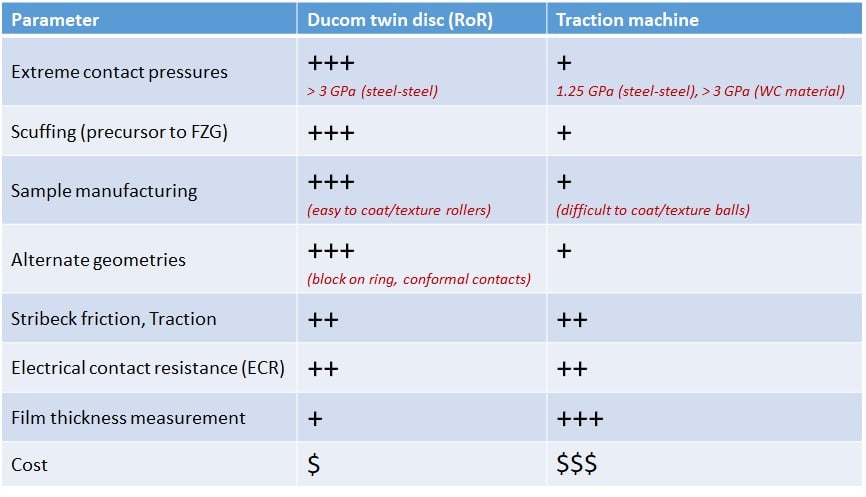
In the absence of standards, engineers have adopted variations of popular test protocols for friction and traction of oils as well as scuffing, that may create confusion. This motivated us to develop and simplify the test methods for evaluation of Stribeck friction, traction curve and scuffing by using Twin Disc. An equally important topic of surface distress (micropitting, white etching cracks) will be addressed in a follow-up article. Common terms used in rolling sliding contacts such as rolling (entrainment) velocity, slide to roll ratio (SRR) and co rotation vs. counter rotation are described in Figure 4.

Figure 4. Motion control features in Twin Disc. Rolling velocity, Vroll = (V1 + V2)/2 : speed dependent entrainment of lubricant into contact (CO-ROTATION), near zero entrainment (COUNTER-ROTATION). Slide roll ratio (SRR %), 2 × 100 × [(V1 - V2) / (V1 + V2)] : defines the shear strain of lubricant within contact
STRIBECK CURVE
Stribeck curve represents the friction characteristic of a lubricant over a wide range of speeds, contact pressures and temperatures. A typical test protocol using Twin Disc is shown in Figure 5. Tests are conducted under varying Vroll (entrainment) velocity and lubricant temperature but with a fixed slide-to-roll ratio (%SRR). [Ref 1,2].

Figure 5. Twin disc test protocol to generate Stribeck like curves for lubricants at extreme pressures.
TRACTION CURVE
This is an critical design parameter for transmission systems with limiting shear stress representing an upper limit to lubricant stability and thereby torque transfer. The rheological characteristics (piezo-viscous effect) and shear strain dependence dictates the traction response under EHD conditions. A typical test protocol is depicted in Figure 6. A characteristic response is the increase in traction under pressure due to molecular rearrangement in highly loaded contacts.
Traction machine tests are conducted under varying % SRR (shear strain) and pressure, but fixed Vroll (entrainment) velocity. [Ref 3,4,5]
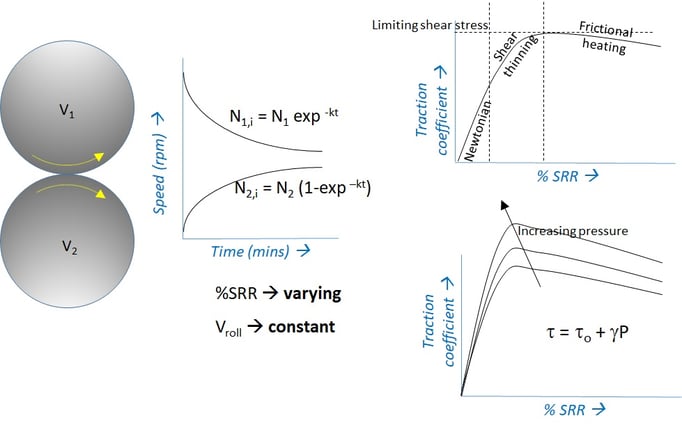
Figure 6. Traction test protocol and characteristic response using roller on roller
SCUFFING LIMIT
Scuffing is associated with the failure of fluid film, additives and surface oxides leading to metal-metal contact in highly loaded contacts. Scuffing is difficult to predict and it can occur at any stage in the operational life of components. Hence reliable tests methods for screening of lubricants, additives and surface engineering solutions are crucial. Widely accepted test protocols are shown in Figure 7. Sharp friction spikes indicate scuffing though the loads differ depending on relative direction of rotation of rollers. Under co-rotation, liquid entrainment occurs leading to a higher scuffing load compared to counter-rotation, where a near zero entrainment (starvation) condition leads to lower scuffing loads. This helps to identify the best additive chemistry independent of lubricant viscosity. Such tests are conducted at fixed Vroll, %SRR but increasing loads. (Ref 6, 7, 8, 9]
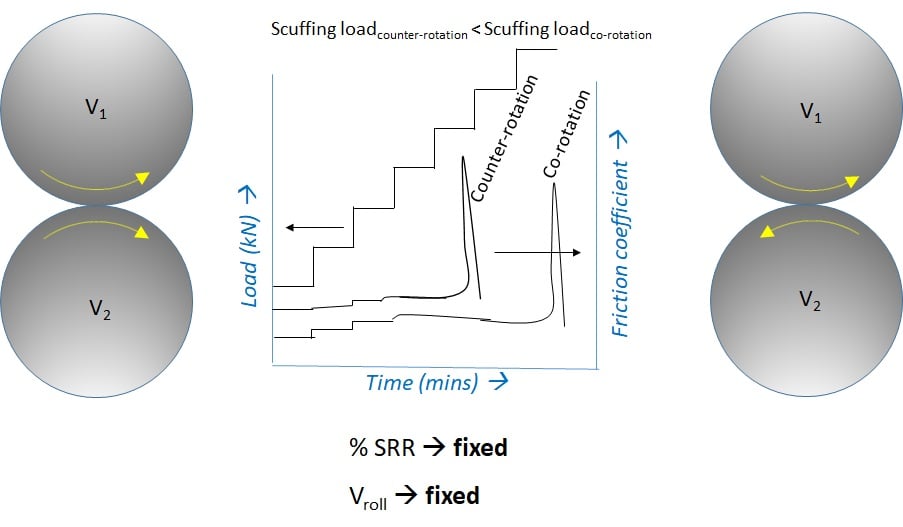
Figure 7. Scuffing test protocol and characteristic response using Twin Disc
Twin disc compared with traction machine provides higher Hertzian pressures, true elliptical contacts and varying %SRR similar to a gear tooth contact. Therefore, the twin disc compared to traction machine is considered as a more reliable precursor to FZG. For example, the Table 8 compares the contact pressures in different FZG scuffing load stages with equivalent load required on Ducom Twin Disc.
Table 8. FZG vs. Ducom Twin Disc comparison of load stage and contact pressure.
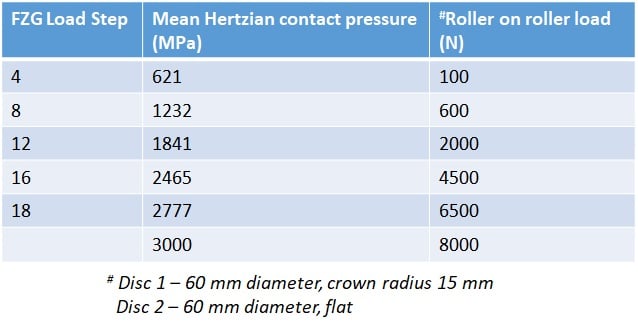
Another advantage of Twin Disc compared to Traction Machine is its modularity in design. In Twin Disc, the top roller can be replaced with other widely used configurations such as block-on-ring, ball on disc and conformal contacts (see Figure 9)
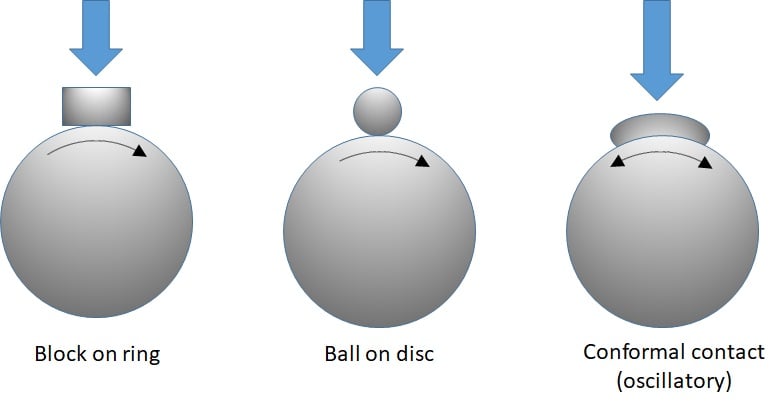
Figure 9. Multiple contact configurations on Ducom RoR
In conclusion, the Ducom twin disc generates higher contact pressures (8 kN load), wider range of %SRR and multiple contact configurations compared with conventional traction machine, for evaluation of lubricants and engineered surfaces (coatings, textures) under extreme conditions.
References
1) “Study of Surface Roughness on Friction in Rolling/Sliding Contacts: Ball‑on‑Disc vs. Twin‑Disc”, (2020), Tribology Letters, Ellen Bergseth, Yi Zhu and Anders Soderberg, 2) “Characterization of Friction and Wear Behavior of Friction Modifiers used in Wheel-Rail Contacts”, (2017), Int. Jl. Prognostics and Health Management, M.A. Oomen, R. Bosman, P.M. Lugt, 3) “Thermal analysis of twin-disc machine for traction tests and scuffing experiments”, (2018), Jl. Engg. Tribology, G Isaac, C Changenet, F Ville, J Cavoret and S Becquerelle, 4) “A Novel Two-Disc Machine for High Precision Friction Assessment”, (2017), Advances in Tribology, Jakob Moder, Florian Grun, Michael Stoschka, and Istvan Godor, 5) “(Cr,Al)N and (Cr,Al,Mo)N Hard Coatings for Tribological Applications under Minimum Quantity Lubrication”, (2019), Tribology Intl, K. Bobzin, T. Brogelmann, C. Kalscheuer, K. Stahl, T. Lohner, M. Yilmaz, 6) “An experimental approach for investigating scuffing initiation due to overload cycles with twin-disc test device”, (2017), Tribology Intl, Matti Savolainen, Arto Lehtovaara, 7) “Gear wear as related to viscosity of gear oils”, (1948), Proc. Summer Conf. MIT, Wear, ASME, H Blok, 8) “Frictional Behaviour of Synthetic Gear Lubricants”, (2001), Tribology Series, B.R. Hohn, K. Michaelis and A. Doleschel, 9) “Low friction slip-rolling contacts - Influences of alternative steels, high performance thin film coatings and lubricants”, (2013), Thesis, BAM Federal Institute for Materials Research, Christian Scholz and Mathias Woydt
Contact us for more information. Our experts are just a click away.
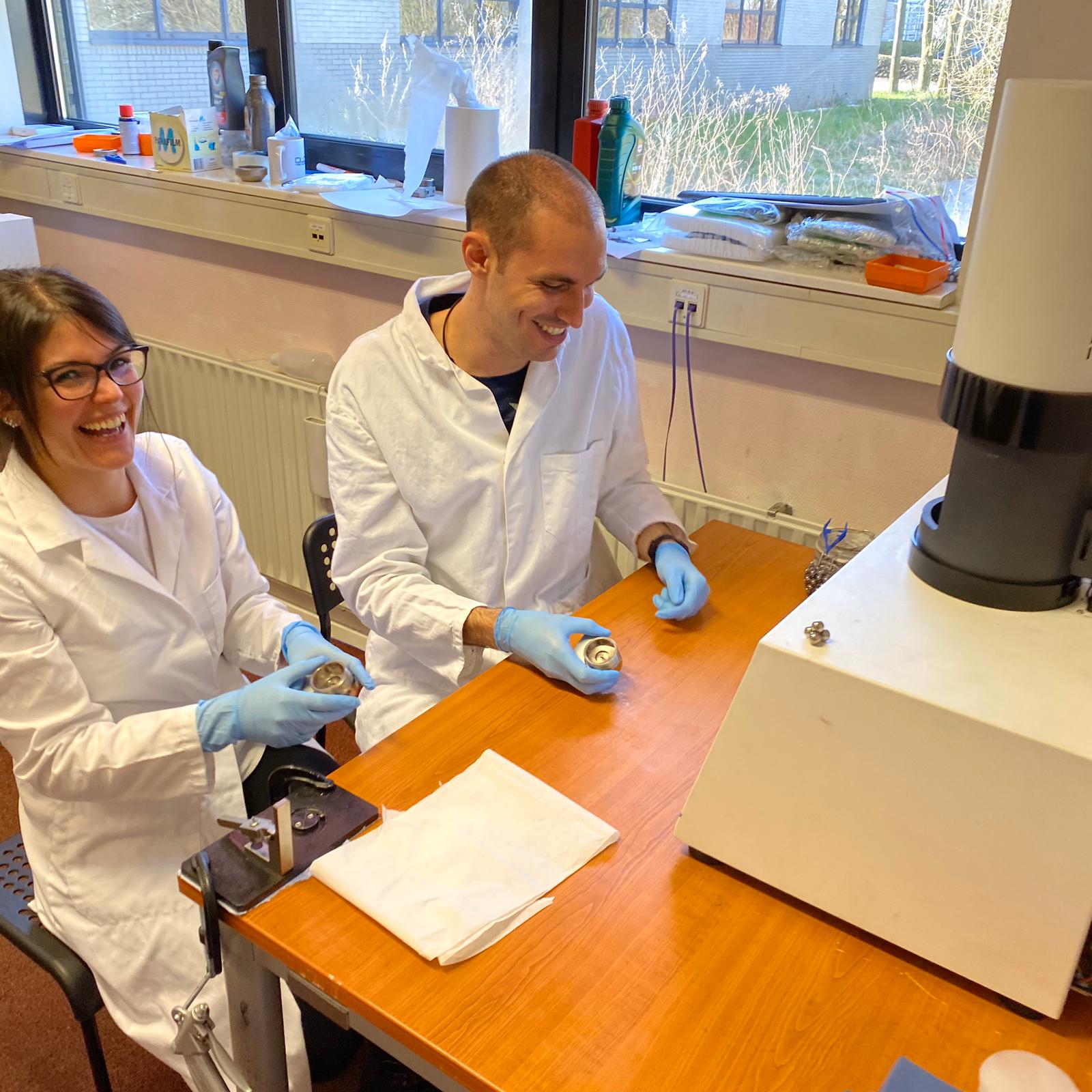
USA: +1 (847) 737-1590
India: +91 (80) 4080-5555
Netherlands: +31 (85) 065 74 10